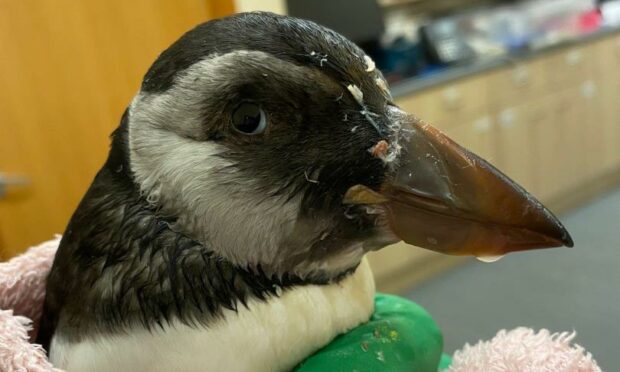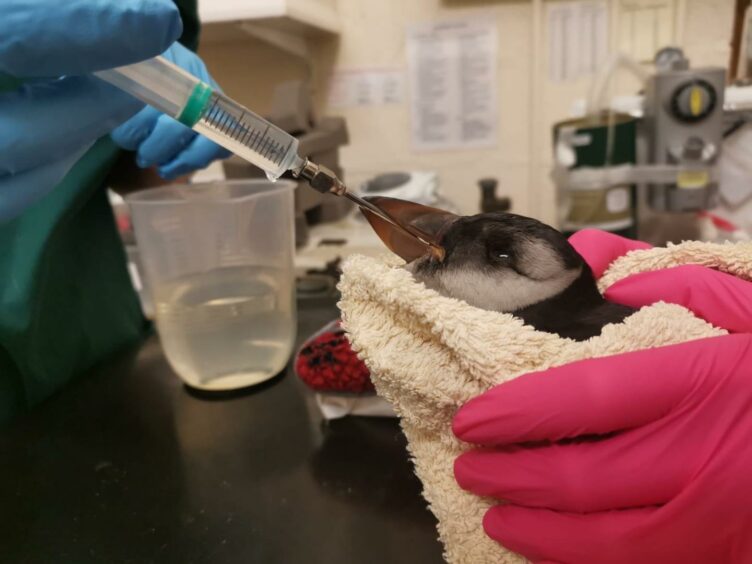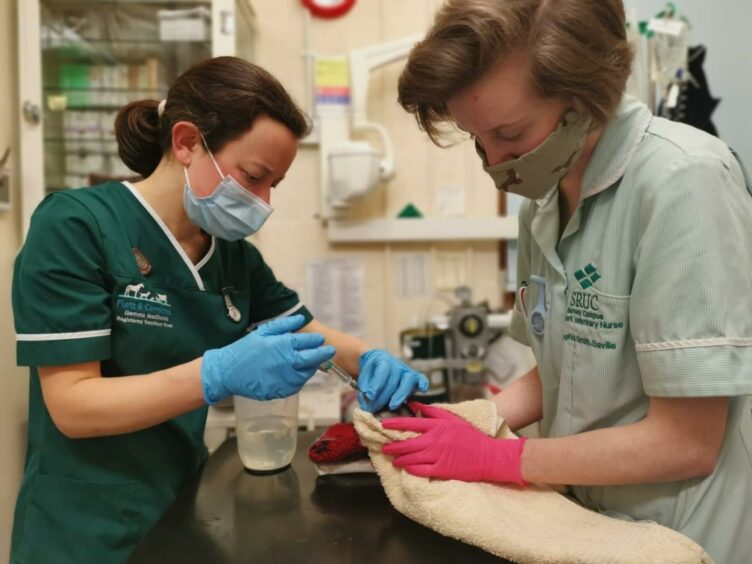More than 100 dead puffins have washed up across the north-east coast of Scotland, Orkney and Shetland over the last three weeks.
Seabird ecologist Dr Francis Daunt has described it as “one of the most significant puffin ‘wrecks'” in nearly 50 years.
It’s not yet clear why the birds are dying, but many of the animals – some of which are barely alive when found – have been described as “emaciated”.
What could be causing the puffin deaths?
The majority of the birds have been found in a thin and weakened state, according to Dr Daunt who works for the UK Centre for Ecology & Hydrology (UKCEH).
“This suggests there could be a problem within the marine food chain,” he said.
This may be linked to the unusually warm water temperatures in September, which can lead to a reduction in food for seabirds.
Another possible reason being floated by experts is the presence of toxic algal blooms.
Under the correct conditions, these blooms can enter the food chain and harm seabirds.
This isn’t the first time that toxic algae has been under serious investigation in relation to seabird deaths this year.
In late summer, several thousand guillemots and razorbills were found dead along the east coast of Britain from Orkney down to Northumberland – and algae may have been the cause.
It is not yet known if this occurrence is linked to the deaths over summer, but poisonous algae is once again being looked at as a possible explanation.
Dead and barely alive puffins are washing up on Orkney’s coastline, pictured here at Scapa beach. No one seems to know why they are dying but local vets are doing their best to care for those that are brought to them. #puffin #Orkney pic.twitter.com/a9w5XG0TZV
— Rob Flett (@robflett) December 15, 2021
A third potential reason for the puffin deaths is avian flu.
However this is looking increasingly unlikely as more than 100 of birds have been tested for flu and all results have come back negative.
Local vets are doing their best to save the weakened puffins
Of the puffins which have washed up on beaches, a few have been found clinging to life.
Many on Scapa beach have been taken to Flett and Carmichael Vets to be cared for and are being given rehydration fluids.
“We’ve treated multiple puffins that were handed in to us by members of the public,” vets Leah Hunter and Kate Carmichael told us.
“Sadly a couple of the puffins have died since.”
The two vets are used to seeing seabirds, but not in these numbers.
“At this time of year, they should be far out at sea in groups so the fact that they are being washed up on land means that things have sadly gone wrong for them.”
All the vets can do is to treat the birds as best they can and hope they survive the next few days.
“The puffins that have been presented to us have been very weak and cold,” they added.
“We have had several bad storms within the last two weeks and suspect this could be a contributing factor to these weaker birds being taken off course.”
What does this mean for the future, and what should I do if I find one?
The implications of these mass seabird deaths are not yet known, but experts are worried.
At UKCEH, Dr Daunt carries out long-term monitoring studies to detect the effects of environmental change on UK seabird populations.
He says some of the dead puffins found washed up in Orkney are adults, so there is a very real concern that this will have a negative effect on next year’s breeding numbers.
He recommends that anyone who spots a dead puffin takes a photograph of it – provided this can be done safely and without touching the animal.
This photo should show the bird’s beak and wings and be sent to UKCEH via enquiries@ceh.ac.uk
If you find a birds which is alive, contact the SSPCA.


